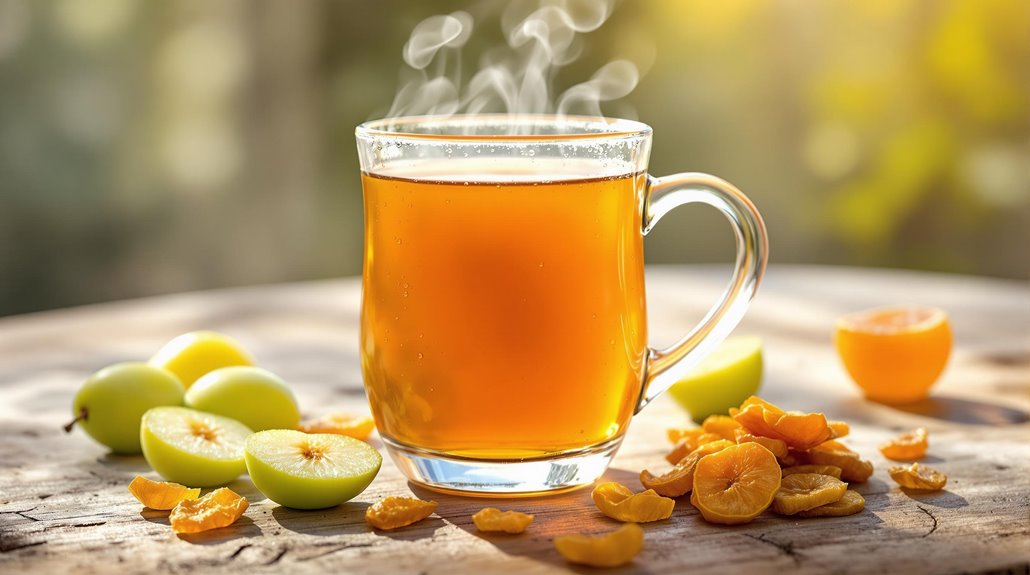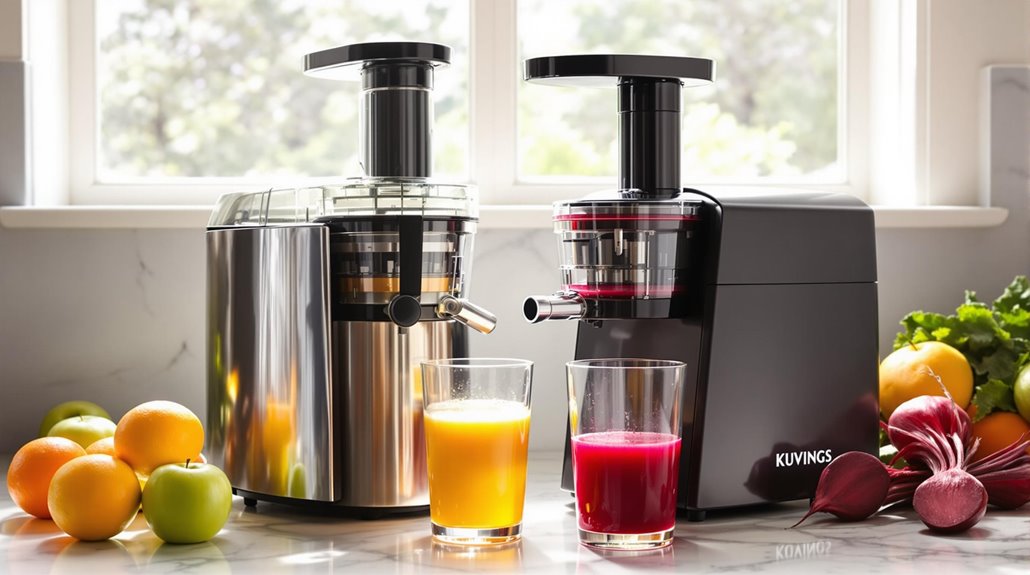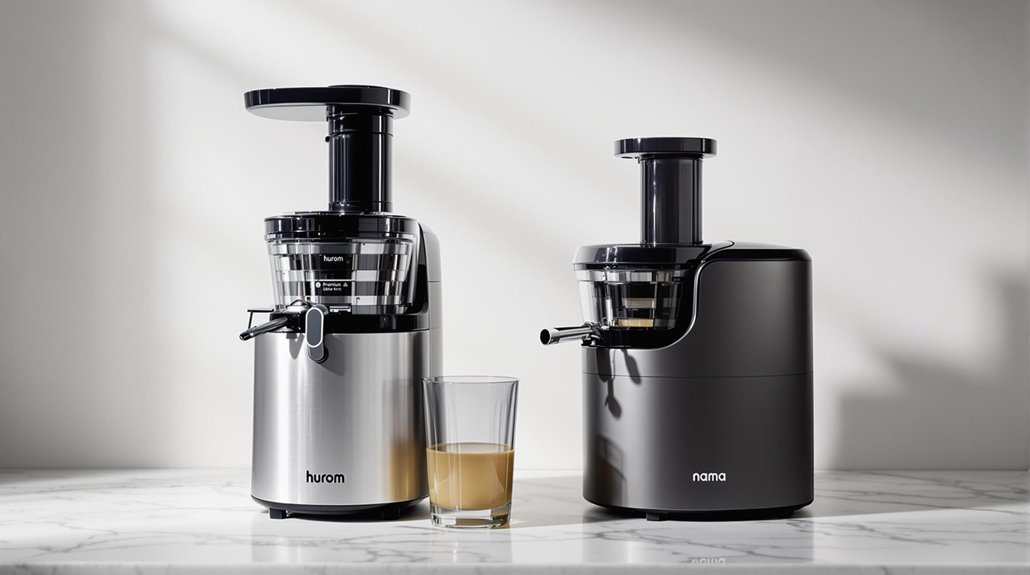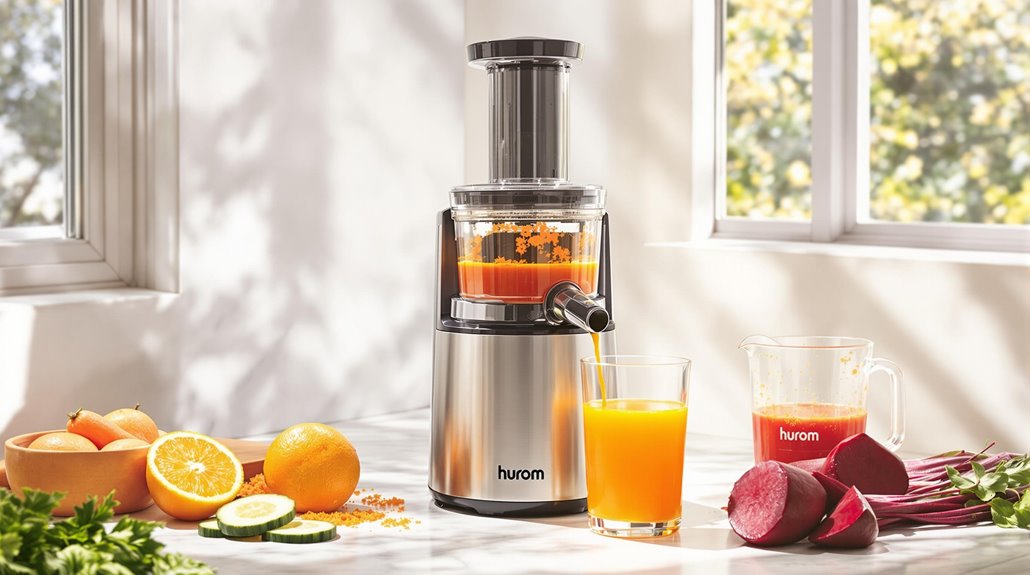Is Hurom a Korean Brand?
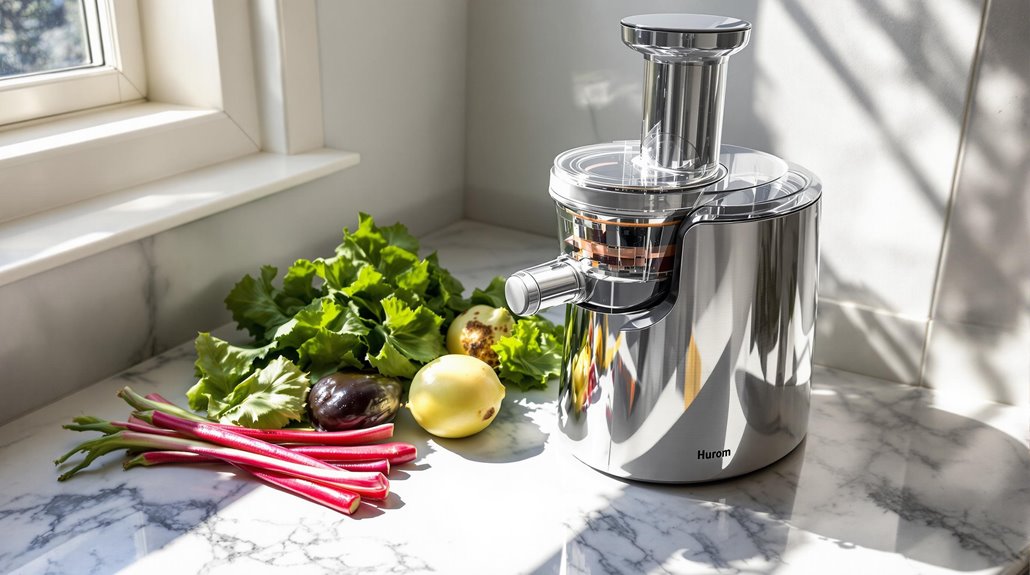
Yes, Hurom is a South Korean brand founded in 1974 that's renowned for its low-speed juicing technology. When it comes to juicing, you'll want to avoid certain vegetables for your safety and health. Don't juice potatoes, rhubarb leaves, or raw sprouts, as they can be harmful. You should also be cautious with cruciferous vegetables and high-oxalic greens like spinach, which may cause digestive issues. Understanding the right ingredients and techniques will help you get the most from your juicing experience.
The Origins and Legacy of Hurom in South Korea
While many consumers recognize Hurom as a leader in slow juicing technology today, the company's story began in South Korea back in 1974. Unlike traditional centrifugal juicers, Hurom's innovative approach revolutionized the industry with their patented low-speed auger system, which better preserves nutrients and enzymes from fruits and vegetables.
You'll find that the Hurom Slow Juicer's design and engineering reflect South Korea's technological prowess. The company's commitment to slow juicing has earned them global recognition, particularly in the United States and Europe. When you're looking for a slow juicer, you'll notice that Hurom's reputation stems from their pioneering work in the field. Their continued success has established them as one of the most respected brands in the industry, making the Hurom juicer a hallmark of Korean engineering excellence. Following in the footsteps of the groundbreaking twin gear juicer invented by Korean Mr. Kim in 1993, Hurom has maintained Korea's tradition of juicing innovation.
Understanding the Technology Behind Slow Juicing
The technology behind slow juicing represents a significant departure from traditional high-speed juicing methods. When you use a masticating juicer, it operates at a lower speed, carefully crushing and pressing your produce instead of rapidly shredding it. This gentle juicing process minimizes heat and oxidation, helping preserve the nutritional value of your fruits and vegetables. Cold press juicing ensures maximum nutrient extraction while maintaining the integrity of enzymes and vitamins in your produce.
You'll notice that slow juicers excel at handling a wide variety of produce, including tough leafy greens and wheatgrass, while maximizing juice yield. The result is a thicker, more nutrient-rich juice that retains its natural color and flavor. What's more, these efficient machines operate quietly and use less energy than their high-speed counterparts, making them an ideal choice if you're serious about getting the most nutrition from your daily juicing routine.
Vegetables to Avoid in Your Juicing Journey
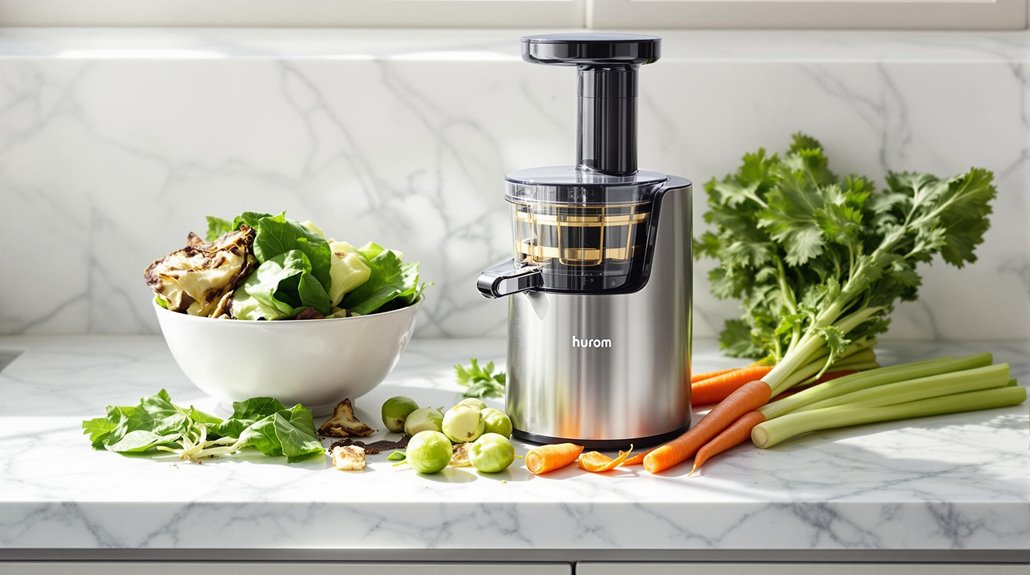
Starting out your juicing expedition requires knowing which vegetables to steer clear of for both safety and digestive comfort. While you can enjoy many raw fruits and leafy greens, certain vegetables shouldn't make it into your juicer.
Potatoes contain solanine, which can produce as much discomfort as nausea and headaches when juiced. Despite the health benefits of most produce, rhubarb leaves and eggplant skins can be harmful due to their oxalic acid and nasunin content. Be cautious with sprouts, as they may harbor E. coli if not properly cleaned.
Though juiced fruits are generally safe, cruciferous vegetables like broccoli and cauliflower might cause bloating in some people. When juicing spinach, consuming too much spinach juice can lead to kidney stones and joint pain due to its high oxalic acid content. By avoiding these ingredients, you'll create safer, more enjoyable juicing experiences while maximizing nutritional benefits.
Health Risks of Juicing Certain Raw Produce
Despite juicing's popularity as a health trend, several raw produce items can pose unexpected health risks when juiced regularly. When you're selecting fruits and vegetables for juicing, you'll need to be mindful of certain compounds that can affect your health. Raw leafy greens contain high oxalic acid levels that might increase your risk of kidney stones, while cruciferous vegetables can impact thyroid function due to their goitrogen content.
Food safety is another pivotal concern with raw produce juicing. You should be especially careful with raw sprouts and unpasteurized juices, as they may harbor dangerous bacteria like E. coli and Salmonella. Additionally, certain parts of produce, such as fruit pits and apple seeds, contain toxic compounds that you should never juice. Being aware of these risks helps you make safer juicing choices.
Best Alternatives for Hard-to-Juice Vegetables
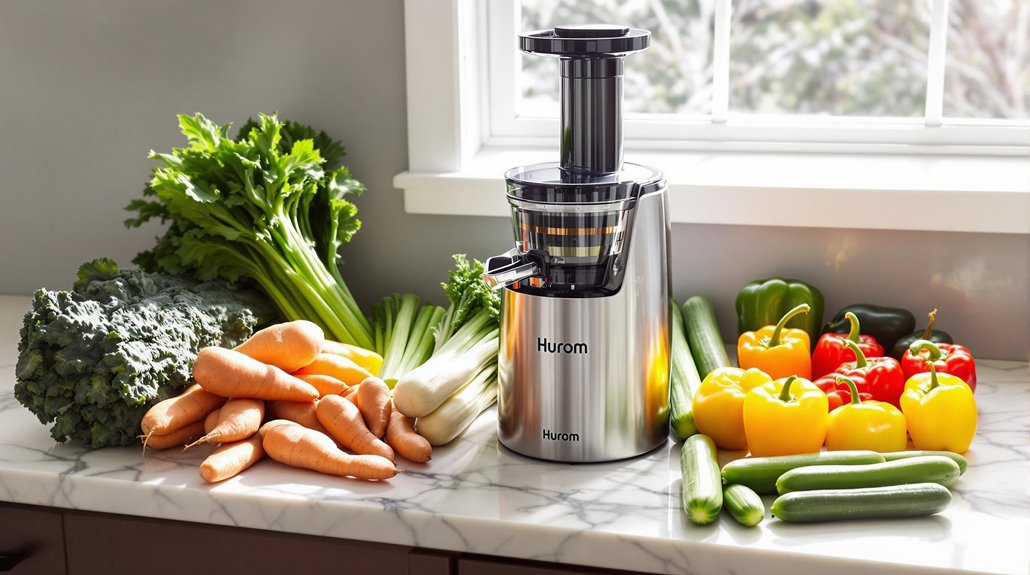
Modern slow juicers offer effective solutions for processing traditionally difficult vegetables. If you're struggling with hard-to-juice produce, a Slow Juicer (worth the investment) can effectively handle challenging ingredients through its mesh filter system. These machines are easy to disassemble and clean, making them practical for daily use.
When juicers tend to struggle with certain vegetables, try these proven alternatives:
- Blend leafy greens like kale and spinach with juicier fruits to reduce pulp in the juice
- Cut fibrous vegetables like celery and ginger into smaller pieces before juicing
- Combine dense vegetables like carrots and beets with softer produce to achieve better extraction
These methods will help you maximize juice yield while maintaining nutrient content, especially when working with traditionally challenging ingredients like herbs and microgreens.
Safety Guidelines for Home Juicing Practice
While juicing offers numerous health benefits, following proper safety guidelines is essential to guarantee foodborne illness prevention and maximize nutritional value. You'll need to start with a thorough cleaning process for all produce, removing any contaminants that could compromise your fruit juice quality.
When making pressed juices, avoid toxic ingredients like raw kidney beans and rhubarb, as they can be harmful when consumed in concentrated amounts.
Store your fresh juices properly by keeping them refrigerated and consuming them within 24-48 hours. When juicing fibrous vegetables, adjust your juicer's speed settings to prevent clogging and certify maximum extraction. Remember to balance strong-tasting greens with sweeter produce for a more palatable drink.
These simple safety measures will help you create nutritious, safe juices at home.
Maximizing Nutritional Benefits While Avoiding Pitfalls
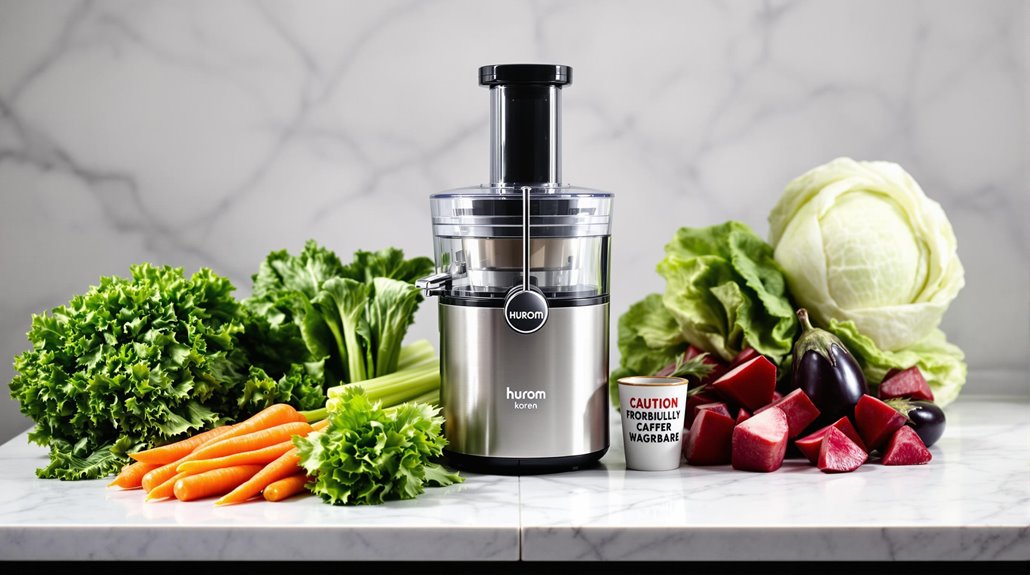
Getting the most nutrition from your juicing routine requires understanding both ideal combinations and common mistakes to avoid. You'll maximize benefits by juicing early in the morning without waking the whole household, when fruits and vegetables are rich in antioxidants and your body is ready to absorb nutrients.
Don't store your juice for a long time - consume it within 15-20 minutes of preparation to prevent nutrient loss and oxidation. Avoid running your juicer at high speed, as this can generate heat that destroys sensitive vitamins and enzymes. Rotate your ingredients weekly to guarantee you're getting a diverse range of nutrients and preventing sensitivity to specific compounds.
Remember to clean your juicer immediately after use to prevent bacteria growth and maintain optimal condition for your next juicing session.

